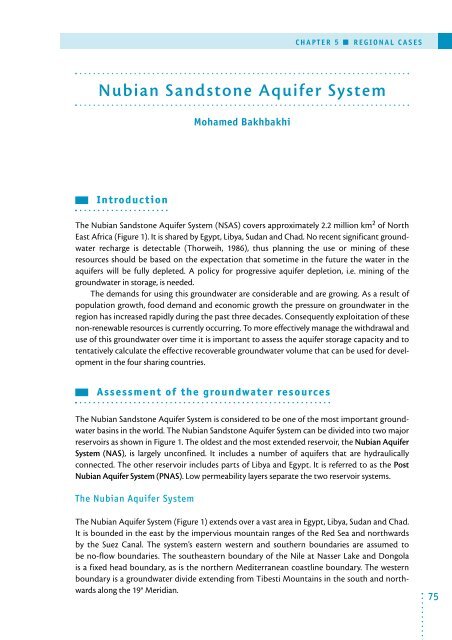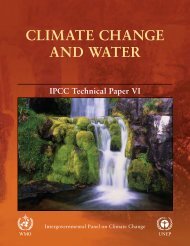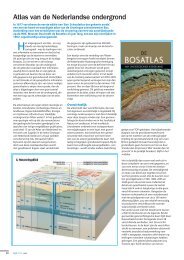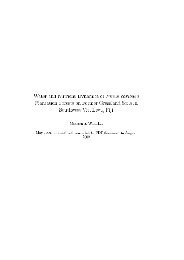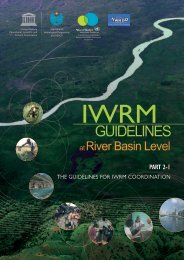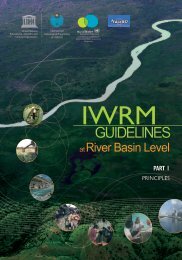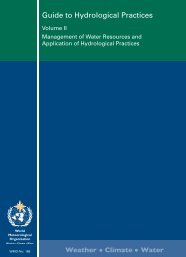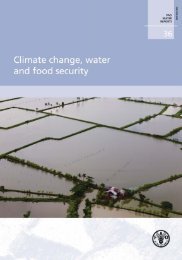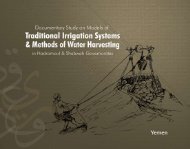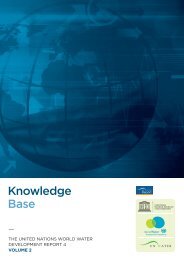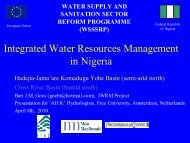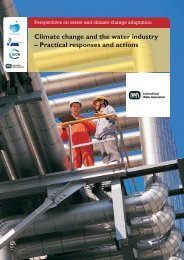Non-renewable groundwater resources: a ... - unesdoc - Unesco
Non-renewable groundwater resources: a ... - unesdoc - Unesco
Non-renewable groundwater resources: a ... - unesdoc - Unesco
- No tags were found...
Create successful ePaper yourself
Turn your PDF publications into a flip-book with our unique Google optimized e-Paper software.
CHAPTER 5 ■ REGIONAL CASESNubian Sandstone Aquifer SystemMohamed BakhbakhiIntroductionThe Nubian Sandstone Aquifer System (NSAS) covers approximately 2.2 million km 2 of NorthEast Africa (Figure 1). It is shared by Egypt, Libya, Sudan and Chad. No recent significant <strong>groundwater</strong>recharge is detectable (Thorweih, 1986), thus planning the use or mining of these<strong>resources</strong> should be based on the expectation that sometime in the future the water in theaquifers will be fully depleted. A policy for progressive aquifer depletion, i.e. mining of the<strong>groundwater</strong> in storage, is needed.The demands for using this <strong>groundwater</strong> are considerable and are growing. As a result ofpopulation growth, food demand and economic growth the pressure on <strong>groundwater</strong> in theregion has increased rapidly during the past three decades. Consequently exploitation of thesenon-<strong>renewable</strong> <strong>resources</strong> is currently occurring. To more effectively manage the withdrawal anduse of this <strong>groundwater</strong> over time it is important to assess the aquifer storage capacity and totentatively calculate the effective recoverable <strong>groundwater</strong> volume that can be used for developmentin the four sharing countries.Assessment of the <strong>groundwater</strong> <strong>resources</strong>The Nubian Sandstone Aquifer System is considered to be one of the most important <strong>groundwater</strong>basins in the world. The Nubian Sandstone Aquifer System can be divided into two majorreservoirs as shown in Figure 1. The oldest and the most extended reservoir, the Nubian AquiferSystem (NAS), is largely unconfined. It includes a number of aquifers that are hydraulicallyconnected. The other reservoir includes parts of Libya and Egypt. It is referred to as the PostNubian Aquifer System (PNAS). Low permeability layers separate the two reservoir systems.The Nubian Aquifer SystemThe Nubian Aquifer System (Figure 1) extends over a vast area in Egypt, Libya, Sudan and Chad.It is bounded in the east by the impervious mountain ranges of the Red Sea and northwardsby the Suez Canal. The system’s eastern western and southern boundaries are assumed tobe no-flow boundaries. The southeastern boundary of the Nile at Nasser Lake and Dongolais a fixed head boundary, as is the northern Mediterranean coastline boundary. The westernboundary is a <strong>groundwater</strong> divide extending from Tibesti Mountains in the south and northwardsalong the 19° Meridian.75


